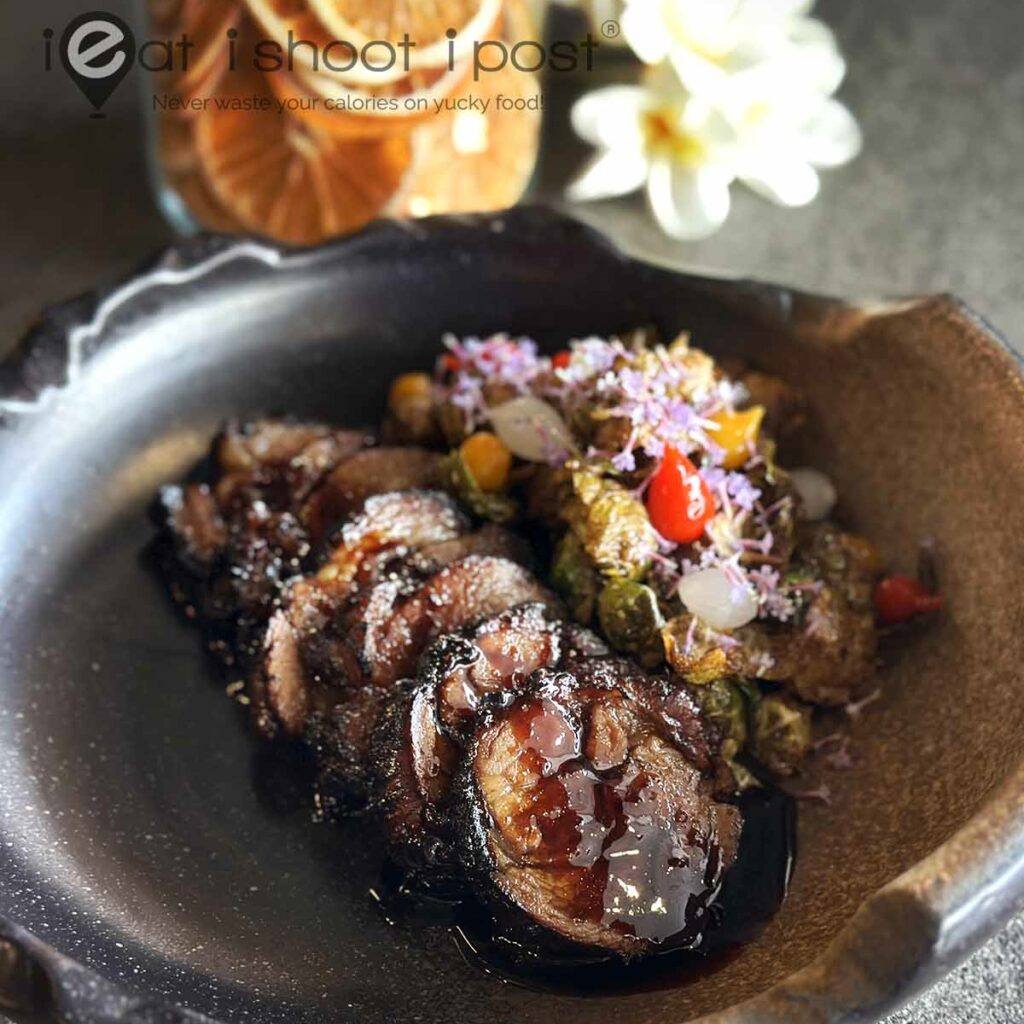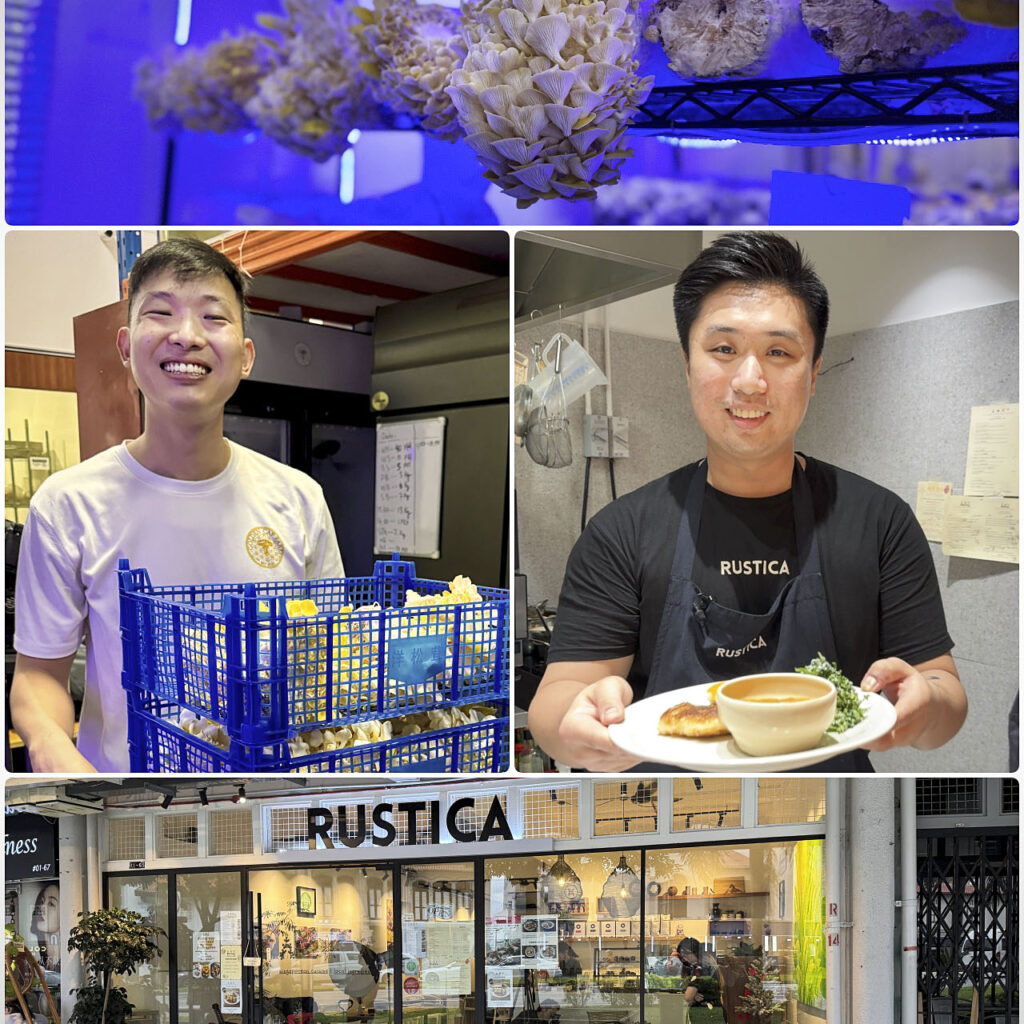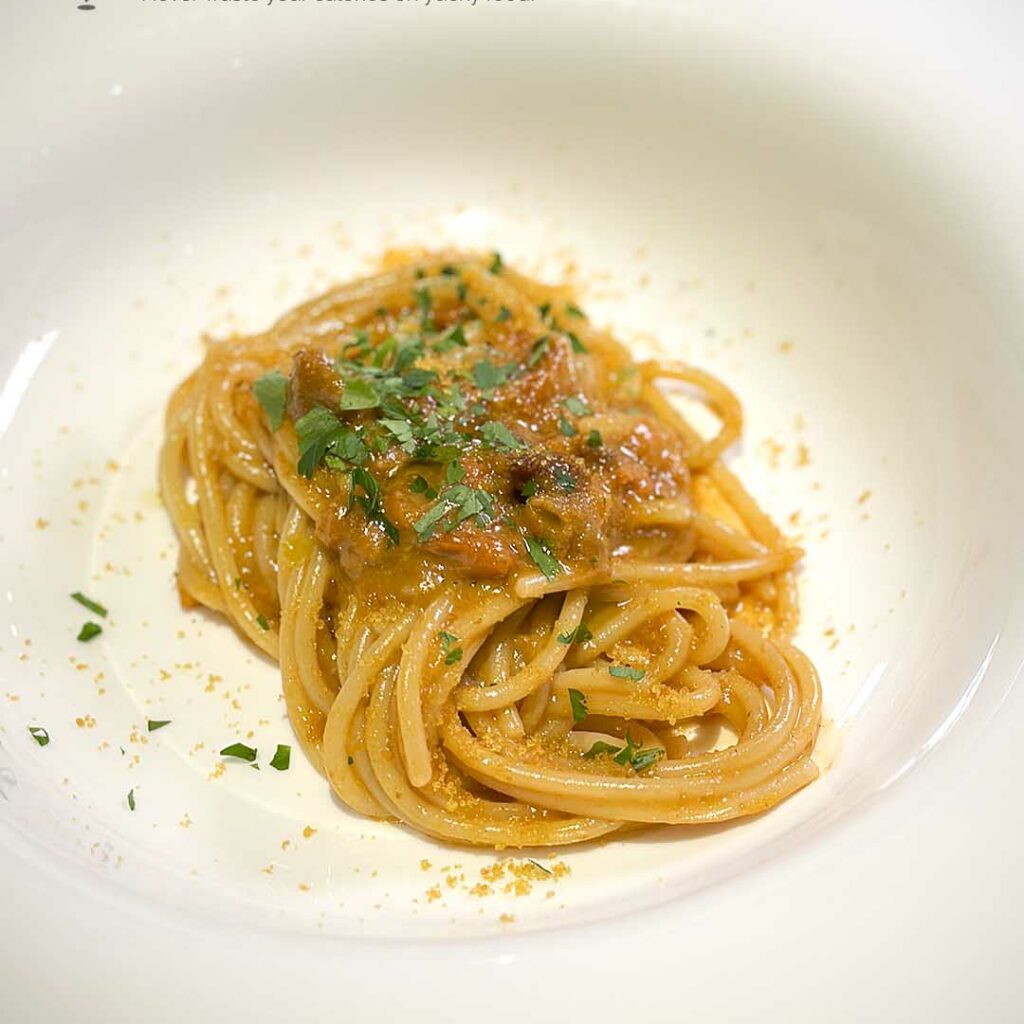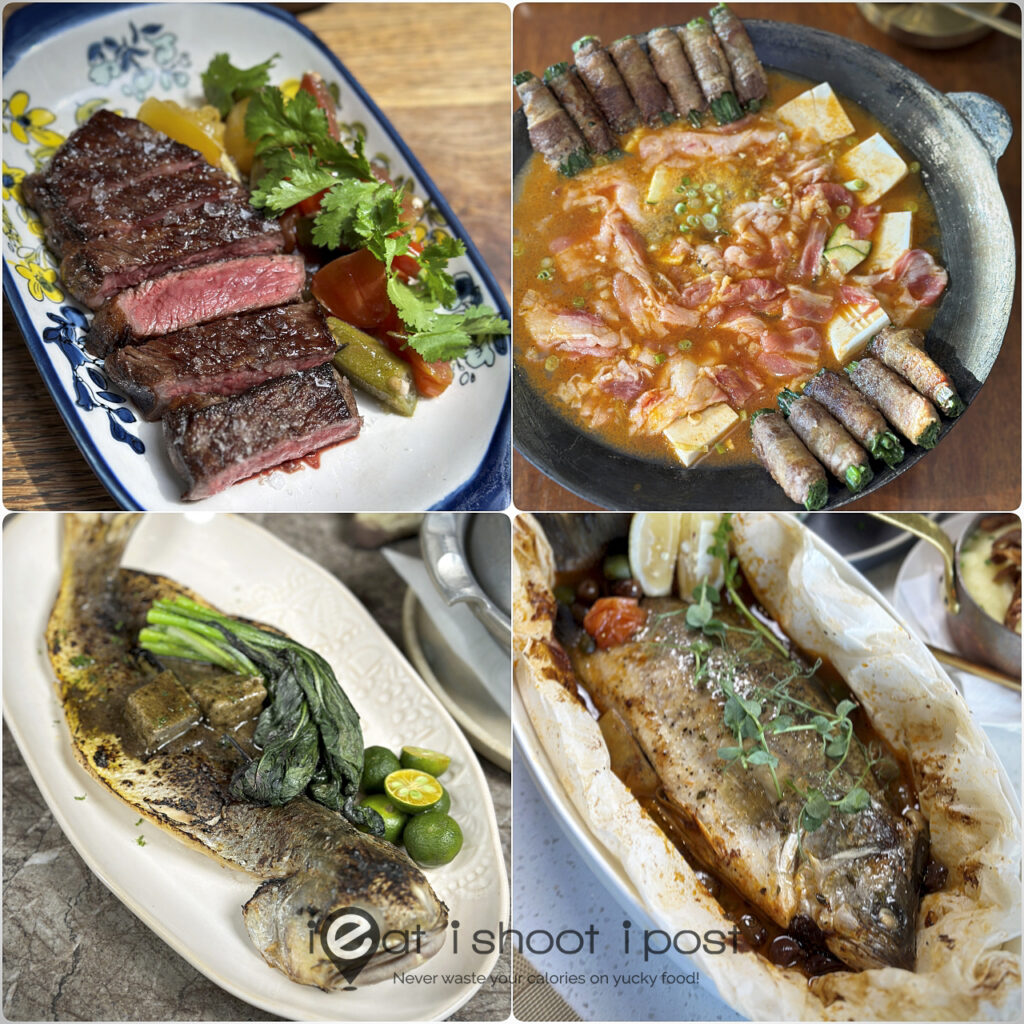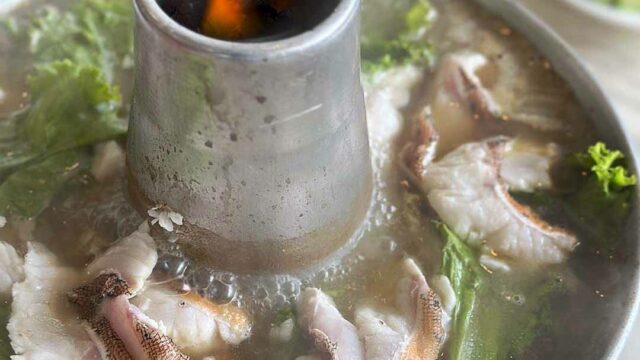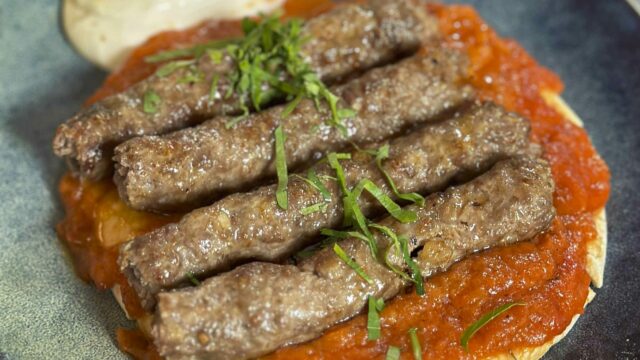
Fresh New Ideas after the 10th Anniversary Celebrations
Chef LG Han is embarking on a new chapter at Labyrinth, unveiling an entirely revamped menu following the restaurant’s 10th-anniversary celebration in March. As Singapore’s only Michelin-starred fine dining establishment dedicated to local flavors, the challenge lies not in finding inspiration, but in reimagining the rich tapestry of our culinary heritage.
While many restaurants celebrating local cuisine often rely on crowd-pleasers like chili crab and chicken rice, Chef Han has taken a more daring route, digging deep into the past to unearth forgotten flavors. The result is a brand new degustation menu with a series of surprising new dishes that have been resurrected after a deep dive into Singapore’s gastronomic history!
Review of the Degustation Menu
Bak Kut Teh Consomme
Our meal began with a Bak Kut Teh consommé, a delicate soup that perfectly captured the essence of traditional Bak Kut Teh. We were surprised to learn from the chef that it was entirely plant-based, making the name “Bak Kut Teh“—which translates to pork bone soup—a bit of an oxymoron.
The broth was crafted from dried shiitake mushrooms, garlic, white pepper, and bak kut teh spices, enriched with kombu for an added umami depth. Aged tangerine peel (five years) introduced a subtle citrus note, while crushed sansho pepper and red Kampot pepper oil provided a bright, floral finish. It really was an elevated take on Bak Kut Teh which I haven’t experienced anywhere else!
Snacks

Our next few courses offered creative reinterpretations of some of our favorite hawker dishes. To celebrate our local hawker culture, Chef Han custom-made mini version of a typical hawker table to serve the snacks. He even included an oversized tissue pack for “choping” the seat, a nod to this quirky yet iconic part of Singapore culture.
While I found the concept amusing at first, the bright yellow color of the table top in the dimly lit restaurant became a bit too glaring after a while.
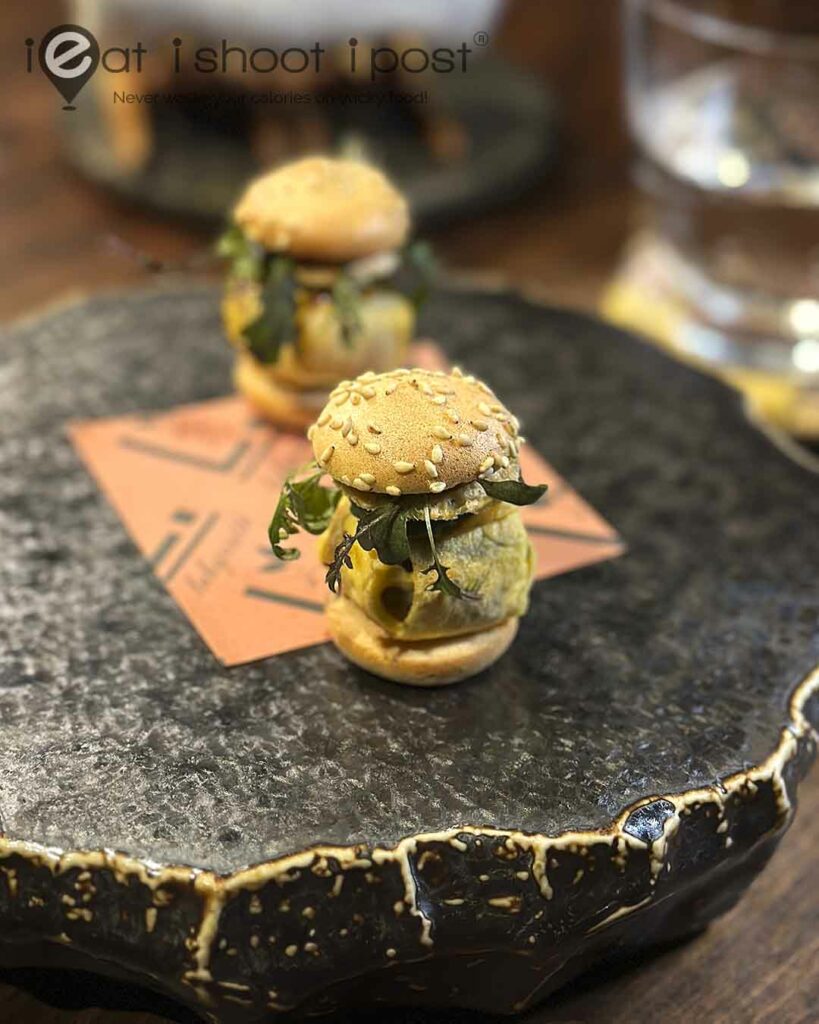
Ramly Burger
The Ramly burger here is truly a labor of love. The “buns” are crafted from tomato meringue dusted with sesame seeds, while the bite-sized patty is made from aburi beef tartare which is seasoned with Worcestershire and Maggi sauce. Topped with cheddar and wrapped in a delicate omelet, it’s finished off with their special “Ramly sauce”. The sauce that includes curry powder and sweet chili, captures the essential flavors of a classic Ramly burger—minus the Planta margarine.
It’s an intriguing dish. Despite the intricate preparation, it didn’t quite deliver the signature Ramly burger shiokness I was hoping for, unfortunately.
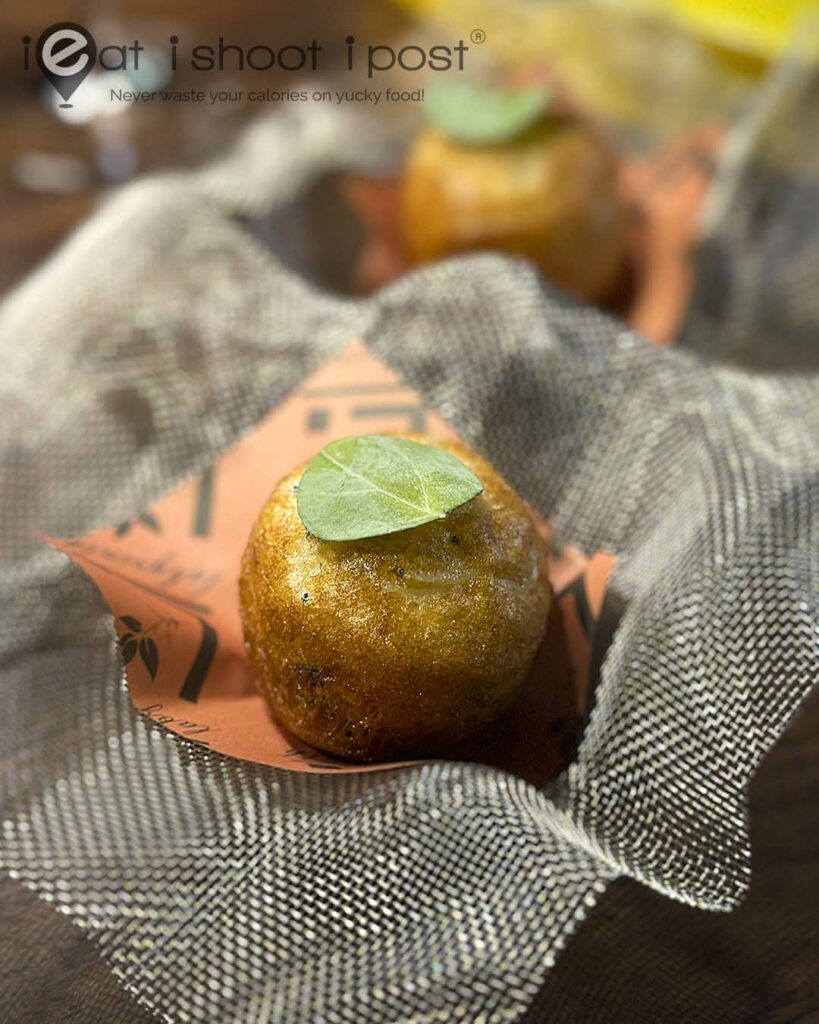
Oyster Bao
I’ve been encouraging Chef Han to create a modern take on this Fujian classic for a while now, and I’m thrilled he finally did.
For this golf ball-sized snack, he encased a David Herve oyster in a light, aerated espuma batter and fried it in a ladle—just like they do at the hawker stalls. It was funny how he used our video of Oyster Boy to explain what an oyster cake or UFO is about.
The result is a light and crisp oyster fritter, complemented by the familiar flavors of peanuts, minced pork, and fresh coriander leaves. To add extra oyster flavour, the fritter is eaten together with a crisp oyster leaf!

Hainanese Curry Puff
The curry puff is inspired by the ubiquitous “Old Chang Kee” curry puffs. Filled with Japanese sweet potatoes, oyster mushrooms, and sweetcorn, it’s encased in a classic shortcrust pastry. A delicious snack that brings back memories for Chef—and for me, too! The crimping of the pastry, however, could be a bit more refined to match the standards of a fine dining establishment.
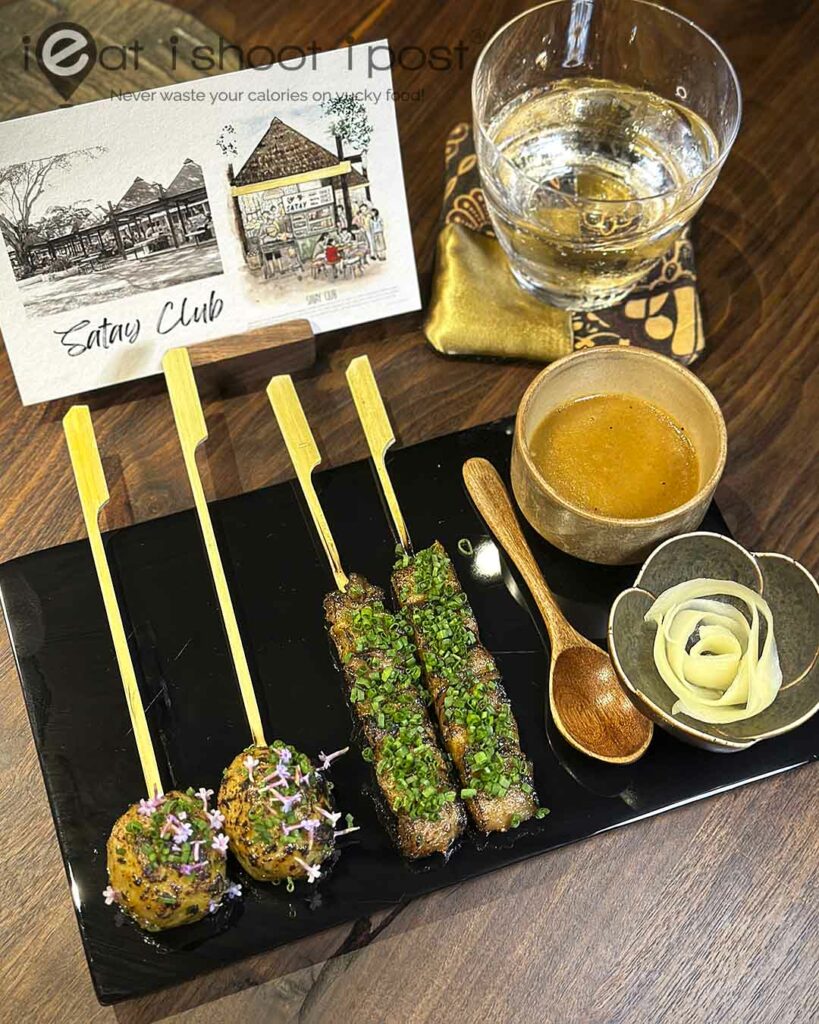
Satay Club
As a Hainanese chef, Chef Han is naturally drawn to local dishes with Hainanese roots, and pork satay is among the favorites. He elevates the classic pork skewers by using alternating layers of Iberico pork loin and jowl, paying homage to the traditional Hainanese satay’s blend of lean meat and fat.
Another inventive skewer includes a quail egg wrapped in marinated minced chicken, grilled over binchotan for added depth. For a unique twist, the skewers are served with a Filipino kare-kare peanut sauce rather than the usual satay sauce

Roti Boy
I am sure many of us still remember the Roti Boy craze two decades ago. Although the hype has largely faded, Labyrinth’s rendition might just spark your desire for these delightful treats again. Their gourmet version features sweet brioche dough enveloping a slab of Bordier seaweed butter, crowned with Singaporean Tiong Hoe coffee craquelin.
The seaweed butter brings a savory umami note that beautifully complements the sweet, buttery crust! This was one of the most eye-opening dishes of the evening!
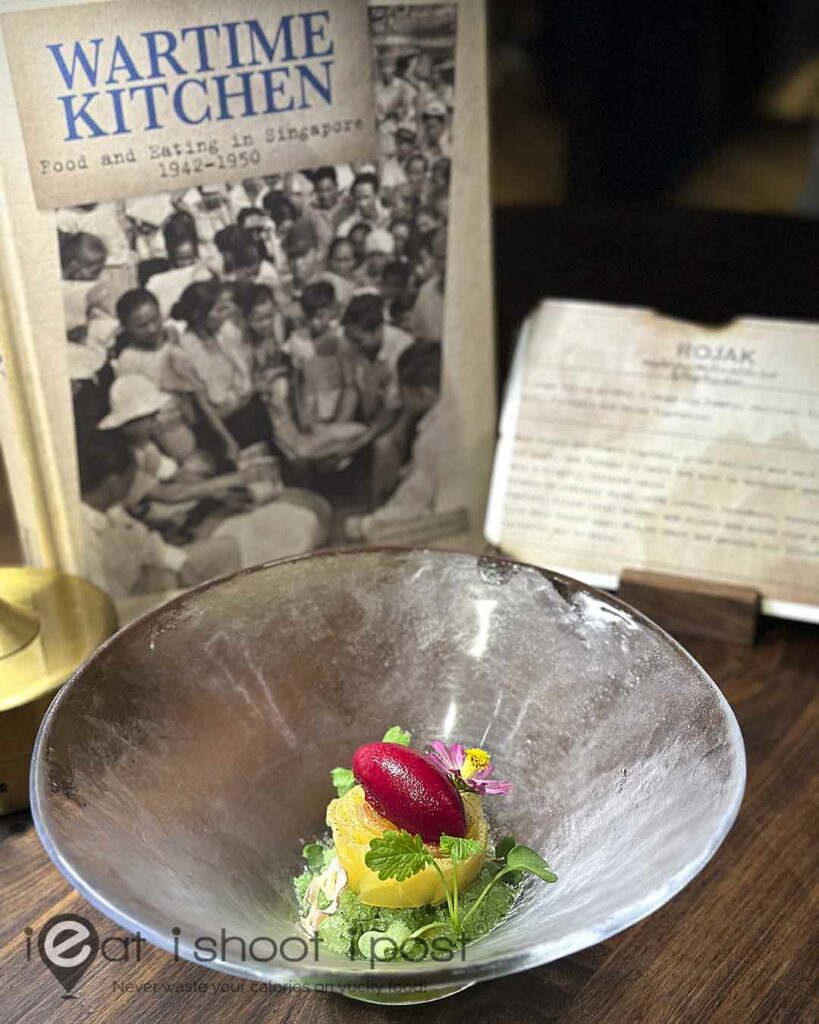
Wartime Rojak
As a palate cleanser before the main courses, we were served ‘Wartime Rojak,’ inspired by descriptions of a rojak dish eaten during the Japanese Occupation. This presentation featured beetroot in two forms: a salt-baked rosette and a red beetroot sorbet. Accompanying these was a refreshing granita of cucumber and lettuce with mint, along with sambal tomat.
At the base of the dish, pineapple was paired with shiso, wasabi cress, and sugar snap peas. The dish was finished with a slice of fried shallot and a fresh ulam raja blossom, creating a cold and refreshing experience that balanced sweetness, savory notes, acidity, and spice. While it’s quite elaborate—and perhaps unnecessarily so—it made for a pleasant palate cleanser.
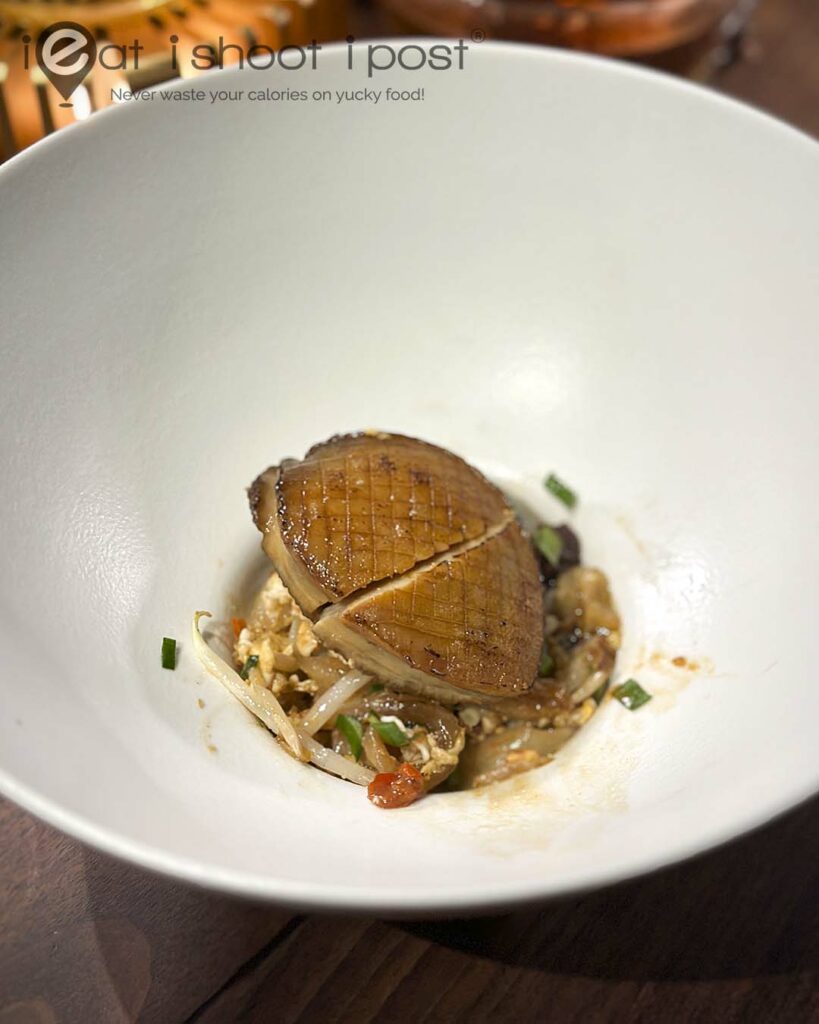
Char Kway Teow
To create a Char Kway Teow without the ‘kway teow‘ (rice noodles), Chef turned to NZ barramundi fish maw. It is soaked overnight, cut, and then steamed for 20 minutes until tender. This ‘kway teow’ is flash-fried with other ingredients to impart a delightful wok hei. It is finally topped with South African abalone, which is braised, pressure-cooked till tender, and char-grilled.
I must say, they have truly captured the essence of Char Kway Teow perfectly with this atas (elevated) low-carb version of the dish!
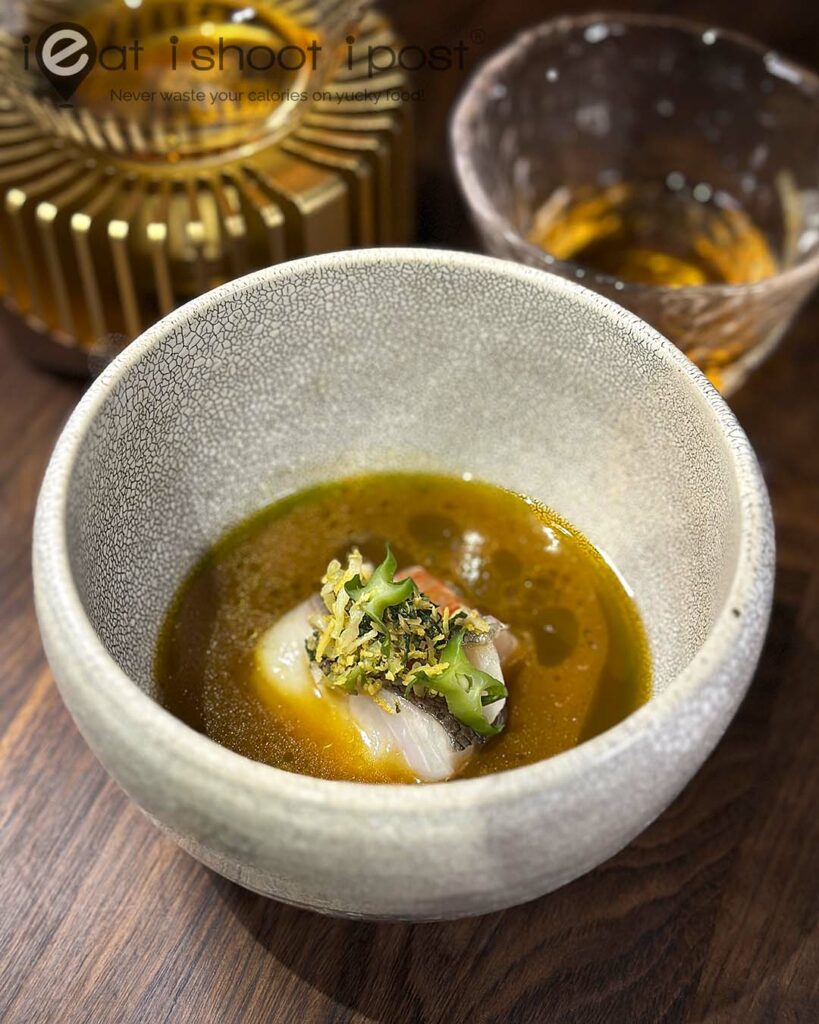
Laksa Siglap
Laksa Siglap was the one dish that truly captivated me. I had never tasted it before. But I discovered that it originated from the Siglap area and is still served at a few hawker stalls on the island!
The sauce, created from mackerel bones and smoked mackerel broth blended with coconut milk, features two types of assam and rempah. It offers a delightful combination of smoky, tangy, and umami flavors. It is reminiscent of Penang-style Assam laksa but much lighter.
Accompanied by laksam noodles and oil-poached madai (red bream), this fine dining version has left me curious about what the original dish tastes like!
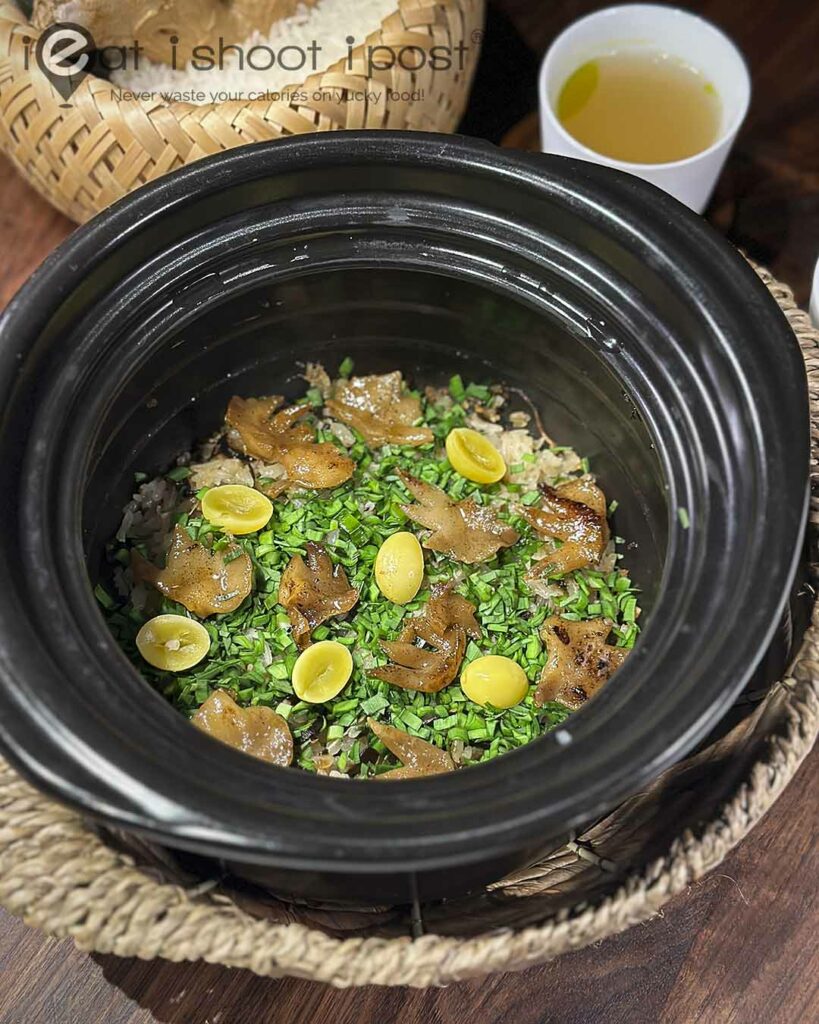
Chicken Rice
While chicken rice has been a staple on the menu since the restaurant’s inception, this is Chef Han’s latest take on the iconic Singaporean dish.
In this rendition, the rice is served in a donabe and topped with sautéed cockscombs, which might be a bit unsettling for the faint-hearted. Accompanying the dish is poached GG poulet breast, paired with a chili sauce inspired by Chef Han’s grandmother’s recipe!
As per tradition, the dish is served with chicken soup, but not just the water used to poach the chicken! Instead we were presented with a clarified chicken soup made with old hen essence, roasted garlic lemongrass, and ginger and finished off with spring onion oil.
Dessert

Tang Yuan
To make the skin of the Tang Yuan, Chef used rice wine lees made by a local small batch brewer and turned it into a pillowy smooth skin. He then filled it with azuki red beans infused with tangerine peel. It was interesting but not something that resonated with me.

Cereal Prawn
Our second dessert was quite a surprise, as we usually don’t think of cereal prawn as a dessert! This innovative dish features oatmeal ice cream infused with 20-year-old Shaoxing wine, complemented by salted egg foam, warabi mochi, and goji berries soaked in 8-year-old Shaoxing wine.
In typical Labyrinth style, it’s presented alongside a special Chef-branded cereal box filled with puffed rice, sakura ebi, curry leaves, and caramelized oats. The addition of umami elements to a dessert is quite interesting.
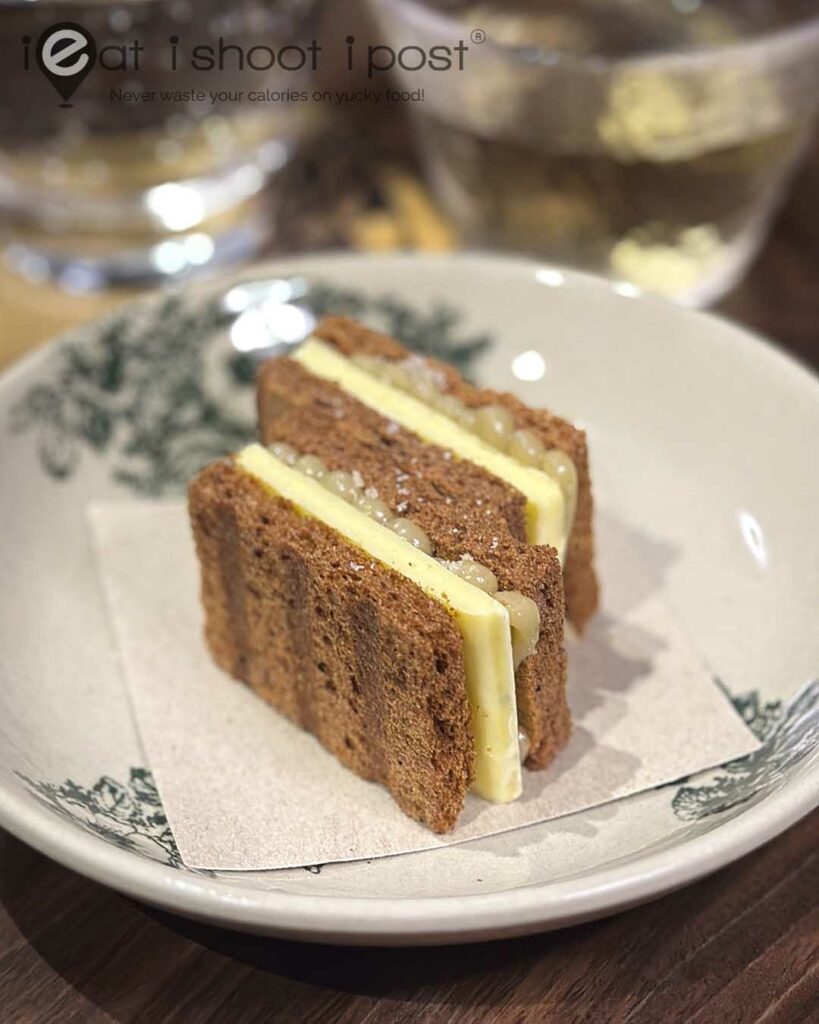
Kaya Toast
Our final dessert is their signature kaya toast which is made with a slab of butter, kaya and “Toast” made from tea-infused meringue.
Conclusion
Labyrinth is more than just a dining experience, it is where every dish tells a story.

Disclosure: this was a media tasting.



